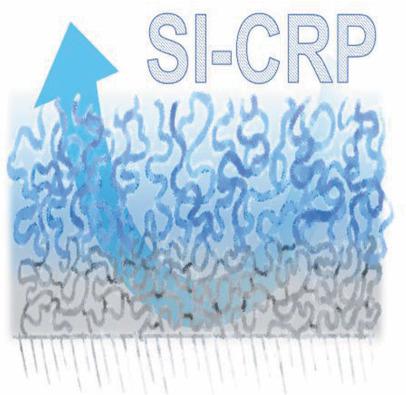当前位置:
X-MOL 学术
›
Macromol. Rapid Commun.
›
论文详情
Our official English website, www.x-mol.net, welcomes your
feedback! (Note: you will need to create a separate account there.)
Quasi‐3D‐Structured Interfaces by Polymer Brushes
Macromolecular Rapid Communications ( IF 4.2 ) Pub Date : 2018-05-22 , DOI: 10.1002/marc.201800189 Edmondo M. Benetti 1
Macromolecular Rapid Communications ( IF 4.2 ) Pub Date : 2018-05-22 , DOI: 10.1002/marc.201800189 Edmondo M. Benetti 1
Affiliation

|
The fabrication of polymer brushes via surface‐initiated controlled radical polymerizations has progressively developed beyond a simple surface functionalization technique, enabling the design of complex polymer interfaces with a quasi‐3D molecular organization. The modulation of polymer brush structure has led to an extremely broad tuning potential for technologically relevant interfacial, physicochemical properties, allowing one to precisely tune swelling, nanomechanical, and nanotribological characteristics of polymer films. In addition, the synthesis of multilayer brush interfaces with hierarchical architecture has been exploited to control biological phenomena on modified platforms, such as cell adhesion and settlement, or to fully prevent biological contamination from bacteria. In this feature article, the most recent developments in the synthesis and application of quasi‐3D structured polymer brushes are summarized, placing particular attention on how the tuning of grafted‐polymer architecture could translate into a variation of interfacial characteristics.
中文翻译:

聚合物笔刷的准3D结构界面
通过表面引发的受控自由基聚合来制造聚合物刷已经超越了简单的表面功能化技术,从而逐步发展出具有准3D分子结构的复杂聚合物界面的设计。聚合物刷结构的调节为技术上相关的界面,物理化学性质带来了极大的调节潜力,使人们可以精确地调节聚合物膜的溶胀,纳米力学和纳米摩擦学特性。另外,具有分层结构的多层刷接口的合成已被用来控制修饰平台上的生物现象,例如细胞粘附和沉降,或完全防止细菌的生物污染。在这篇专题文章中,
更新日期:2018-05-22
中文翻译:

聚合物笔刷的准3D结构界面
通过表面引发的受控自由基聚合来制造聚合物刷已经超越了简单的表面功能化技术,从而逐步发展出具有准3D分子结构的复杂聚合物界面的设计。聚合物刷结构的调节为技术上相关的界面,物理化学性质带来了极大的调节潜力,使人们可以精确地调节聚合物膜的溶胀,纳米力学和纳米摩擦学特性。另外,具有分层结构的多层刷接口的合成已被用来控制修饰平台上的生物现象,例如细胞粘附和沉降,或完全防止细菌的生物污染。在这篇专题文章中,











































 京公网安备 11010802027423号
京公网安备 11010802027423号